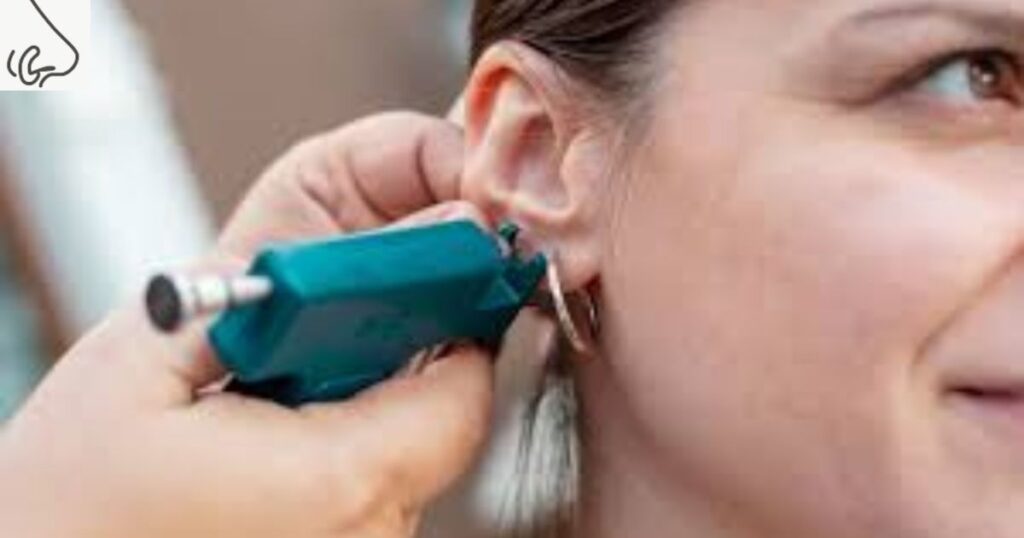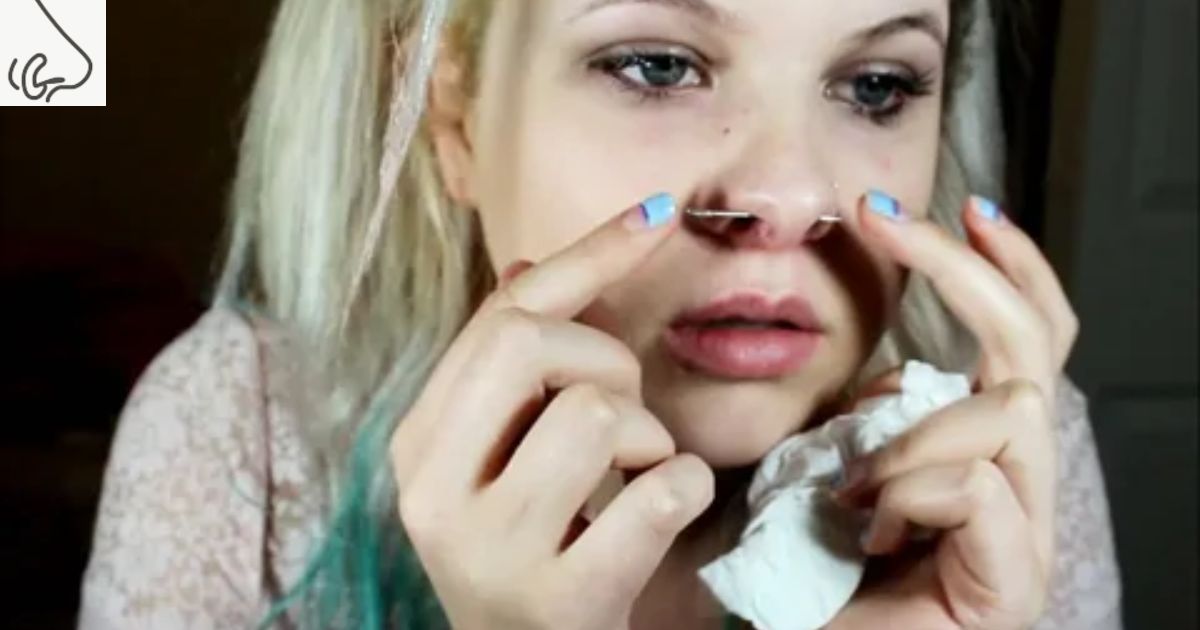When it comes to body modification, nose piercings have been a popular choice for centuries. They allow individuals to express themselves and embrace their unique style. However, circumstances can change, and you might find yourself wondering whether it’s possible to re-pierce your nose in the same hole. In this article, we will explore the world of nose piercings, focusing on the idea of re-piercing in the same spot.
The Basics of Nose Piercing
| Topic | Details |
| The Basics of Nose Piercing | |
| The Initial Piercing | – Must be done by a professional piercer. |
| – Healing process: 2 to 4 months for initial healing. Up to a year for full tissue maturation. | |
| – Use high-quality jewelry, such as surgical steel, titanium, or niobium. | |
| Reasons for Re-Piercing | |
| Jewelry Change | – May want to switch from stud to hoop or vice versa. |
| Infection or Complications | – In some cases, an infection or complications during the healing process may lead to the removal of the piercing. Once healed, you may want to re-pierce it. |
| Lost Jewelry | – Jewelry can sometimes be lost or accidentally removed, leaving a healed piercing without adornment. |
| Style Evolution | – Your personal style might evolve, and you may wish to revisit a nose piercing after a period of time. |
| Re-Piercing in the Same Hole | |
| Time Frame | – Healing time varies, but typically 2 to 4 months for initial healing and up to a year for full tissue maturation. |
| – Re-piercing too soon can lead to complications. | |
| Healed Piercings | – Generally safe to re-pierce in the same hole if the piercing has fully healed. |
| – Consult an experienced piercer to assess the site and guide the re-piercing. | |
| – Re-piercing may involve piercing through scar tissue from the previous hole. Scar tissue can be thinner and more delicate, so an experienced piercer is crucial to avoid complications. | |
| Factors to Consider | |
| Location | – The location of the previous piercing can impact the ease of re-piercing. Some areas are more accessible than others. |
| Scar Tissue | – The amount and condition of scar tissue from the previous piercing can affect the re-piercing process. |
| Pain Tolerance | – Re-piercing can be more uncomfortable due to the presence of scar tissue. Ensure you’re prepared for some discomfort during the procedure. |
| The Re-Piercing Process | |
| Consultation | – Have a consultation with a professional piercer to discuss various aspects of re-piercing. |
| – Topics include the location, scar tissue, jewelry type, and potential risks or complications. | |
| Piercing Procedure | – Procedure involves preparation, marking, piercing, jewelry insertion, and aftercare. |
| Aftercare for Re-Piercing | |
| Cleaning | – Regularly clean the new piercing with saline or recommended antiseptic solutions. |
| – Avoid touching the piercing with dirty hands to prevent infection. | |
| – Keep the initial jewelry in place until the piercing fully heals. | |
| – Monitor for signs of infection and consult the piercer if needed. | |
| – Follow professional advice and instructions. | |
| Risks and Complications | |
| Infection | – Improper aftercare can lead to infection. |
| Scarring | – Re-piercing can lead to additional scar tissue, potentially more pronounced than the original piercing. |
| Pain | – Re-piercing can be more painful due to scar tissue and the healing process. |
| Allergic Reactions | – Some individuals may experience allergic reactions to certain types of jewelry. |
| FAQs | |
| Can I re-pierce my nose in the same hole? | Re-piercing your nose in the same hole is possible, but it depends on factors like healing time and the condition of the previous piercing site. Consult with a professional piercer for guidance. |
| What are the risks of re-piercing in the same hole? | Risks include infection, scarring, increased pain due to scar tissue, and potential allergic reactions to jewelry. Proper aftercare is crucial to minimize these risks. |
| How long does it take for a nose piercing to heal? | A nose piercing typically takes 2 to 4 months to initially heal, but up to a year for the tissue to fully stabilize. |
| Should I keep the initial jewelry in place when re-piercing? | It’s advisable to keep the initial jewelry in place until the piercing has fully healed to prevent complications. |
| What should I do if I suspect an infection after re-piercing? | If you notice signs of infection, such as redness, swelling, pain, and discharge, consult your piercer for guidance and proper care instructions. |
| Conclusion | Re-piercing your nose in the same hole is indeed possible, but it should be done with careful consideration, especially regarding the healing time and the condition of the previous piercing site. Always consult with an experienced piercer who can assess your specific situation and provide guidance. Nose piercings are a personal and artistic form of self-expression. Whether it’s your first time or you’re revisiting a beloved style, the key to success is ensuring that the procedure is done professionally and that you follow proper aftercare to enjoy your nose piercing safely and with style. |
The Initial Piercing
Your first nose piercing is an exciting and often carefully considered decision. Paralyzed from piercing your nose incorrectly, it involves making a hole through the nostril or septum, creating a pathway for jewelry to be inserted. Here’s what you need to know about the initial piercing:
- Professional Piercing: It’s crucial to have your nose pierced by a professional with experience in the field. This ensures the procedure is done safely and accurately.
- Healing Process: After the initial piercing, your body goes through a healing process. During this time, it’s essential to follow proper aftercare instructions to prevent infections and complications.
- Jewelry Choice: High-quality jewelry is vital to avoid allergic reactions and infections. Common materials include surgical steel, titanium, and niobium.
Reasons for Re-Piercing
There are several reasons why someone might consider re-piercing their nose in the same hole:
- Jewelry Change: You might want to switch to a different type of jewelry, such as a hoop instead of a stud.
- Infection or Complications: In some cases, an infection or complications during the healing process may lead to the removal of the piercing. Once healed, you may want to re-pierce it.
- Lost Jewelry: Jewelry can sometimes be lost or accidentally removed, leaving a healed piercing without adornment.
- Style Evolution: Your personal style might evolve, and you may wish to revisit a nose piercing after a period of time.
Re-Piercing in the Same Hole: Is It Possible?
The possibility of re-piercing in the same hole largely depends on the specific circumstances and the amount of time that has passed since the initial piercing.
Time Frame
The healing time for a nose piercing can vary from person to person, but it typically takes around 2 to 4 months for the initial healing process. However, it can take up to a year for the tissue to completely mature and stabilize.
- Re-Piercing Too Soon: Re-piercing a nose that has not fully healed can lead to complications, including infection and prolonged healing times.
Healed Piercings
If your nose piercing has fully healed, it’s generally safe to re-pierce in the same hole. Healed tissue is more stable and less likely to develop complications. Here’s what you need to know:
- Consult a Professional: It’s essential to consult with an experienced piercer who can assess the site and provide guidance on re-piercing.
- Scar Tissue: Re-piercing may involve piercing through scar tissue from the previous hole. Scar tissue can be thinner and more delicate, so an experienced piercer is crucial to avoid complications.
Factors to Consider
When contemplating re-piercing in the same hole, there are factors to consider:
- Location: The location of the previous piercing can impact the ease of re-piercing. Some areas are more accessible than others.
- Scar Tissue: The amount and condition of scar tissue from the previous piercing can affect the re-piercing process.
- Pain Tolerance: Re-piercing can be more uncomfortable due to the presence of scar tissue. Ensure you’re prepared for some discomfort during the procedure.
The Re-Piercing Process

Re-piercing a nose in the same hole involves a specific process to ensure a successful outcome. Here’s what to expect:
Consultation
Before re-piercing, it’s essential to have a consultation with a professional piercer. During this consultation, you’ll discuss:
- The location of the previous piercing and the desired placement for the new one.
- The condition of the scar tissue and whether it can be pierced through.
- The type of jewelry you want to use for the re-piercing.
- Any potential risks or complications.
The Piercing Procedure
The re-piercing procedure follows these general steps:
- Preparation: The piercer will sanitize the area and prepare the necessary equipment.
- Marking: The piercer will mark the precise location of the new piercing to ensure accuracy and symmetry.
- Piercing: Using a sterilized needle or piercing gun, the piercer will create a new hole through the marked spot.
- Jewelry Insertion: The chosen jewelry will be inserted through the new hole.
- Aftercare: After the procedure, you’ll receive aftercare instructions to ensure proper healing and minimize the risk of infection.
Aftercare for Re-Piercing
Proper aftercare is crucial for a successful re-piercing in the same hole. It helps minimize the risk of complications and ensures a swift healing process. Here are some aftercare tips:
- Cleaning: Clean the new piercing regularly with saline solution or an antiseptic solution recommended by your piercer.
- Hands Off: Avoid touching the piercing with dirty hands to prevent infection.
- Avoid Changing Jewelry Too Soon: It’s advisable to keep the initial jewelry in place until the piercing has fully healed.
- Monitor for Infection: Be vigilant for signs of infection, such as redness, swelling, pain, and discharge. If any of these symptoms occur, consult your piercer.
- Follow Professional Advice: Always follow the advice and instructions provided by your piercer.
Risks and Complications
Re-piercing your nose in the same hole is generally safe when done by a professional and under the right circumstances. However, there are risks and potential complications to be aware of:
- Infection: If proper aftercare is not followed, infection can occur.
- Scarring: Re-piercing can lead to additional scar tissue, which may be more pronounced than the original piercing.
- Pain: Re-piercing can be more painful due to scar tissue and the healing process.
- Allergic Reactions: Some individuals may experience allergic reactions to certain types of jewelry.
FAQs
- Can I re-pierce my nose in the same hole?
- Re-piercing your nose in the same hole is possible, but it depends on factors like healing time and the condition of the previous piercing site. Consult with a professional piercer for guidance.
- What are the risks of re-piercing in the same hole?
- Risks include infection, scarring, increased pain due to scar tissue, and potential allergic reactions to jewelry. Proper aftercare is crucial to minimize these risks.
- How long does it take for a nose piercing to heal?
- A nose piercing typically takes 2 to 4 months to initially heal, but up to a year for the tissue to fully stabilize.
- Should I keep the initial jewelry in place when re-piercing?
- It’s advisable to keep the initial jewelry in place until the piercing has fully healed to prevent complications.
- What should I do if I suspect an infection after re-piercing?
- If you notice signs of infection, such as redness, swelling, pain, and discharge, consult your piercer for guidance and proper care instructions.
Conclusion
Re-piercing your nose in the same hole is indeed possible, but it should be done with careful consideration, especially regarding the healing time and the condition of the previous piercing site. Always consult with an experienced piercer who can assess your specific situation and provide guidance.
Nose piercings are a personal and artistic form of self-expression. Whether it’s your first time or you’re revisiting a beloved style, the key to success is ensuring that the procedure is done professionally and that you follow proper aftercare to enjoy your nose piercing safely and with style.



















